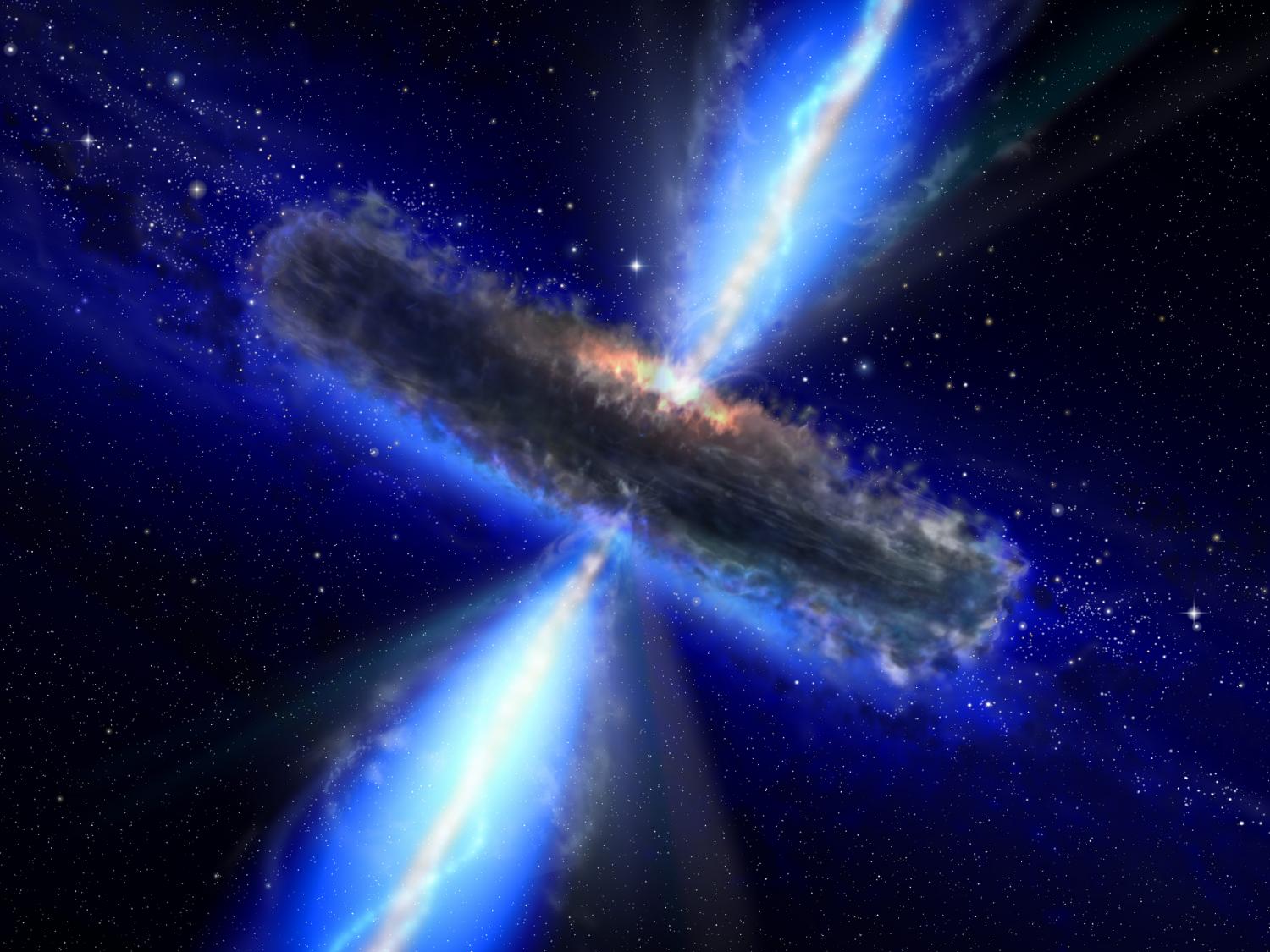The brightest and most distant quasars, both young and old, show powerful galactic winds
The Institute de Astrophysics de Andalusia (IAA-CSIC) leads the study of twenty-two very luminous and distant quasars that completes our knowledge of the diversity of these objects
Quasars are one of the most luminous objects we can observe in the universe. Like all active galaxies, they have a structure consisting of a central supermassive black hole surrounded by a disc of gas that feeds it, all embedded in a toroid, a kind of donut of gas and dust that hides the central regions. Their study over more than six decades has allowed us to differentiate and separate populations, and a new study now reveals that the brightest and most distant quasars have powerful winds, capable of generating large amounts of energy and transporting gas over great distances.
We know the structure of quasars indirectly, thanks to spectroscopy, a technique that breaks down their light and allows us to study the motion of gas up to regions close to the black hole's event horizon (the zone beyond which gravity is so intense that even light cannot escape). But, unlike stars, quasars show different spectroscopic characteristics depending on the viewing angle (for example, if the toroid is edge-on it hides the central region), and this historically complicated the development of a tool to sort out the diversity of quasars.

"Today, however, we use a powerful tool to organise the observed diversity. Called 4DE1, it is based on four independent observational measurements (two in visible light and one each in ultraviolet and X-rays). Specifically, the information in visible light allows us to separate quasars into two different populations: young quasars that show a low-mass black hole and a high accretion rate of matter (population A), and old quasars with a very massive black hole that absorb little matter (population B)", says Alice Deconto-Machado, a researcher at the Institute de Astrophysics de Andalusia (IAA-CSIC) who leads the work.
Thanks to the use of 4DE1, the characteristics of nearby quasars are now well understood, but the picture is less clear for distant quasars. The work has extended the study of these populations to very distant, high-luminosity sources with a sample of twenty-two quasars observed with the Very Large Telescope (VLT), part of the European Southern Observatory (ESO), and with additional data in the ultraviolet from astronomical databases, especially the Sloan Digital Sky Survey (SDSS). The light from these quasars has taken about seven billion years to reach us, so they were emitted when the Universe was half its current age.
The new spectra have allowed the team to study the structure and kinematics of the accretion disc and the physics of the quasar in regions very close to the black hole, just light-weeks away. We have applied a very robust method of spectral line decomposition and found unambiguous signs of powerful gas flows in both population A and population B," says Alice Deconto-Machado (IAA-CSIC). We also see that these fluxes come from different spatial scales, from the regions closer to the black hole as well as from the accretion disc.
Feedback from active galactic nuclei (AGN) is considered to be one of the main contributors to the evolutionary process of galaxies. The exploration of the entire 4DE1 space provides insight into how supermassive black holes co-evolve with their host galaxies, which is closely related to their accretion rates and the presence of nuclear winds and jets.
A. Deconto-Machado et al. "High-redshift quasars along the main sequence". Astronomy & Astrophysics, Jan 2023. https://doi.org/10.1051/0004-6361/202243801
Instituto de Astrofísica de Andalucía (IAA-CSIC)
Unidad de Divulgación y Comunicación
Silbia López de Lacalle - sll[arroba]iaa.es - 958230676
https://www.iaa.csic.es
https://divulgacion.iaa.csic.es

